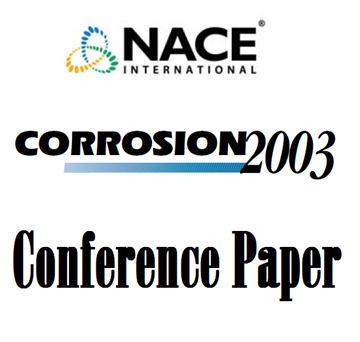Search
Pipelines, Tanks, and Underground Systems
View as
Sort by
Display
per page
00070 CORROSION INHIBITION OF WET GAS PIPELINES UNDER HIGH GAS AND LIQUID VELOCITIES
Product Number:
51300-00070-SG
ISBN:
00070 2000 CP
$20.00
00092 RAPID UNDERGROUND CORROSION MEASUREMENTS FOR BURIED PIPELINES
Product Number:
51300-00092-SG
ISBN:
00092 2000 CP
$20.00
00178 A PROCESS FOR LINING OILFIELD PIPELINES
Product Number:
51300-00178-SG
ISBN:
00178 2000 CP
$20.00
02256 CATHODIC PROTECTION SHORTING STRAP INDUCED CORROSION AND FAILURE OF PRESTRESSED CONCRETE PIPE
Product Number:
51300-02256-SG
ISBN:
02256 2002 CP
Publication Date:
2002
$20.00
02426 THE INFLUENCE OF SOIL CHEMISTRY ON SCC OF PIPELINES AND THE APPLICABILITY OF THE 100 mV POLARIZATION CRITERION
Product Number:
51300-02426-SG
ISBN:
02426 2002 CP
Publication Date:
2002
$20.00
03029 STRATEGIES TO PREVENT CORROSION UNDER INSULATION IN PETROCHEMICAL INDUSTRY PIPING
Product Number:
51300-03029-SG
ISBN:
03029 2003 CP
Publication Date:
2003
$20.00
03046 OPTIMIZATION OF PIPELINE COATING AND BACKFILL SELECTION
Product Number:
51300-03046-SG
ISBN:
03046 2003 CP
Publication Date:
2003
$20.00
03180 Advances in Corrosion Growth Analysis and Future Integrity Assessment of Pipelines
Product Number:
51300-03180-SG
ISBN:
03180 2003 CP
Publication Date:
2003
$20.00
03202 The use of Dedicated Simulation Software for the Design and Understanding of the Cathodic Protection of Underground Pipeline Networks under various Interference Conditions
Product Number:
51300-03202-SG
ISBN:
03202 2003 CP
Publication Date:
2006
$20.00
04046 Corrosion Protection of Ductile Iron Pipe
Product Number:
51300-04046-SG
ISBN:
04046 2004 CP
Publication Date:
2004
$20.00
05031 Testing and Selection of Girth Weld Protective Coatings
Product Number:
51300-05031-SG
ISBN:
05031 2005 CP
Publication Date:
2005
$20.00
05037 Life-Cycle Cost Comparisons of Corrosion Protection Methods for Ductile Iron Pipe
Product Number:
51300-05037-SG
ISBN:
05037 2005 CP
Publication Date:
2005
$20.00












